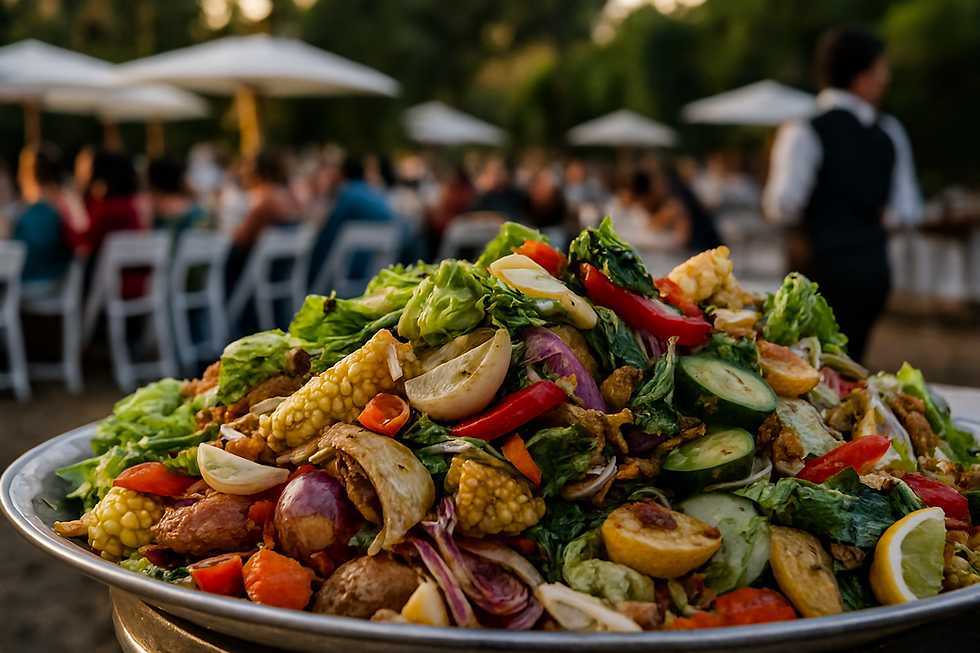How to Plan a Year of Content Around Your Sustainable Events
- Avion W. Anderson
- Jun 17
- 2 min read
Planning an eco-conscious or sustainable event is already a powerful statement—but how you share that event with the world is where lasting impact is made.
Whether you're a purpose-driven brand, a green destination, or a conscious organization, you have an opportunity to turn your events into a content goldmine that inspires, educates, and converts all year long.
Sustainable events deserve strategic, impactful content that amplifies their message beyond the event itself. By mapping out a year-long content plan, you ensure consistent engagement with your audience, build anticipation, and reinforce your event’s values.
So, how do you strategically plan a full year of content around your sustainable event(s)?

Here’s how to turn your mission into a meaningful, consistent content flow that captivates and connects with your audience.
Step 1: Define Your Core Themes and Content Pillars
Your content should revolve around key themes that resonate with your audience. Some effective pillars for sustainable events include:
- Eco-friendly Event Planning Tips – Educate your audience on how to host greener gatherings.
- Vendor Spotlights – Showcase sustainable caterers, florists, and event partners.
- Behind-the-Scenes Content – Share planning journeys to highlight authenticity.
- Success Stories & Testimonials – Feature past event highlights and attendee feedback.
- Industry Trends & Innovations – Discuss new sustainability trends in event management.
Step 2: Set a Content Cadence
Break down content production into monthly, weekly, and daily activities:
- Quarterly: High-impact pieces like webinars, detailed blogs, or downloadable guides.
- Monthly: Event updates, deep dives into sustainable practices, spotlight features.
- Weekly: Social media posts, reels, podcast episodes, or short-form articles.
- Daily: Engagement with your audience—polls, interactive stories, or Q&As.
Step 3: Create a Content Calendar Aligned with Event Milestones
Build content around key phases of your event cycle:
- Pre-event: Promotional teasers, behind-the-scenes insights, sustainability tips.
- During-event: Live coverage, event highlights, speaker spotlights.
- Post-event: Recaps, testimonials, sustainability impact reports.
Step 4: Repurpose and Refresh Your Content
Maximize content lifespan by repurposing:
- Turn long-form blogs into carousel posts or infographics.
- Use webinar highlights for short LinkedIn clips.
- Convert attendee interviews into quotes for marketing materials.
Step 5: Engage and Optimize Continuously
Track engagement metrics and refine your strategy to improve reach:
- Analyze which topics resonate most with your audience.
- Experiment with new formats—videos, podcasts, interactive workshops.
- Ensure consistency across all platforms while adapting to trends.

Final Thoughts
A sustainable event is more than a one-day experience—it’s an opportunity to inspire change year-round.
Planning a year of content around sustainable events ensures not just visibility but longevity in the eco-conscious space.
With thoughtful planning and a strong content strategy, your eco-events can live on through storytelling, spark conversations, and position your brand as a leader in conscious celebrations.
If you need help mapping out your year of content or turning your event into a purpose-driven digital experience, I’m here to guide you.
🌿 Let’s transform your green values into visual stories that connect, convert, and create impact.



Comments